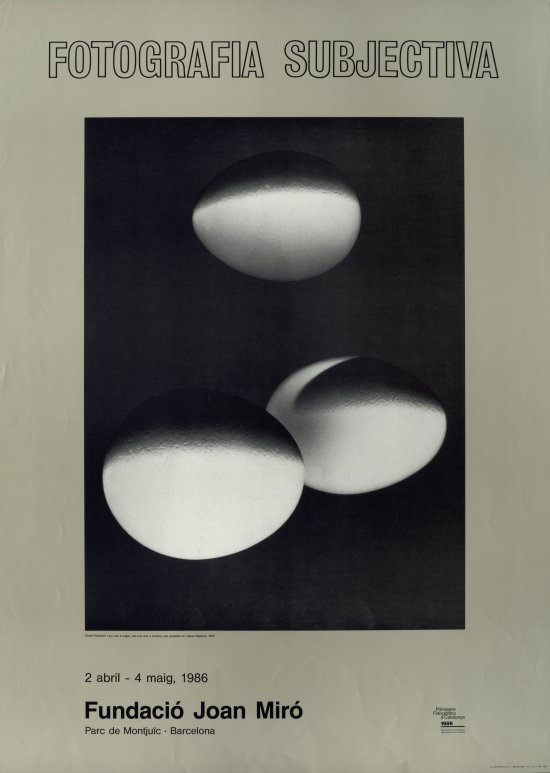- Dates
- —
- Curated by
- Ute Eskildsen
Subjective Photography: Images of the 50s
Subjective photography
The programme of a photograph without a programme
‘Those commonplace and merely beautiful pictures, which thrive mainly thanks to the charm of some actual object, are thrust into the background in favour of experiments and fresh solutions. Adventures into the realm of optics are still for the most part unpopular. But only that photography which enlists the help of the experimental will be able to lay bare all the technical formation of the visual experience in our times.’
With these words, Otto Steinert established the concept of ‘subjective photography’ in 1951.
After the Second World War, there was a resurgence of photographic activity in Germany, concentrated mainly on photojournalism thanks to the appearance of numerous illustrated magazines, but also on commissions to photograph architecture triggered by the reconstruction of cities.
In 1948, the members of the select Society of German Photographers (GDL), founded in 1919, met again and reaffirmed in their statutes their desire to play a leading role in German professional photography.
In 1949, the French military regime staged an exhibition in Neustadt in which French and German photographers took part, the latter having to submit to an admissions jury. This was strongly criticised by some of the photographers, who formed a group called Fotoform, made up of Siegfried Lauterwasser, Peter Keetman, Wolfgang Reisewitz, Toni Schneiders, Otto Steinert and Ludwig Windstosser. The group lacked a programme, for its members never drew up a manifesto or set themselves specific goals.
The work of its members was characterised by free photography and it displayed a confrontational attitude towards the more classical aspects represented by the GDL at the time. The group’s breakthrough came with its presentation at the Cologne exhibition in 1950. The press highlighted the group’s works as the only lucid photographs in the exhibition.
In 1951, Otto Steinert organised the first exhibition of subjective photography, which in a way led to the first problems with the rest of the group: taking advantage of his role as initiator, he refrained from making a collective selection. The exhibition, which had been planned since 1950, was presented in June 1951 (the same year as Photokina) at the Saarbrücken School of Arts and Crafts. Subjectivity was defined as a general prerequisite for creative work. No limits were set, neither on the technical means of photography nor on the subject matter, as long as the translation of reality was sufficient for the scales of creation and abstraction that Steinert and Schmoll applied to an individually and subjectively formed black-and-white photograph. According to Steinert, colour photography had not yet achieved the status of an objective pictorial medium.
This exhibition has been prepared by Ute Eskildsen, curator at the Museum Folkwang in Essen. Eskildsen was also one of Steinert’s followers, making her the ideal specialist to curate this exhibition, which brings together the most representative authors from different countries who shared the criteria of subjective photography at the time.


